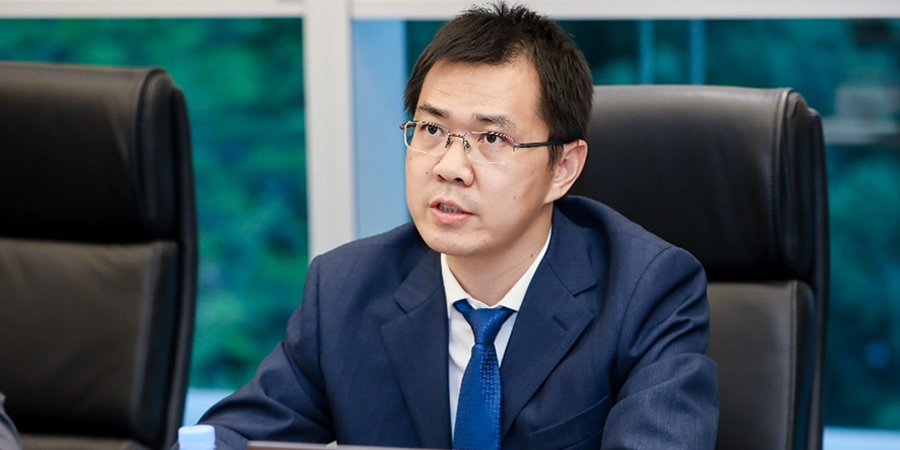Stressing on the need for high-quality networks for accelerating the commercial deployment of 5G, Cullen Xu, vice president of Huawei 5G & LTE TDD product Line, stated, “As 5G commercial deployment enters a new stage, users' requirements for experience and services continue to increase, the trend of 5G high-quality network construction is significant to operators.”
He said this during his keynote speech entitled "High-Bandwidth Massive MIMO Is the Core for Building High-quality 5G Networks" at the Huawei Global Analyst Summit (HAS). “We believe that high-bandwidth Massive MIMO is the key to delivering ultimate network performance and is the core of operators' 5G high-quality networks,” he added.
He shared a few scenarios that warrant superior network performance. For example, he pointed out that HD video services are a new direction which requires higher network speed. “Globally, video services account for 70% of the total mobile traffic, which is the most important service type in mobile scenarios. HD video traffic accounts for 55% of the total mobile video traffic, he commented. “In addition, HD video services in home scenarios are also becoming a trend. Currently, carriers around the world have deployed more than 90 5G wireless home broadband access (FWA) networks. By the end of 2021, the number of FWA subscribers worldwide has exceeded 3 million, and the average DOU of FWA has increased by three times compared with that of 4G,” he added.
He also stated that high-quality networks are becoming a trend for operators to build 5G networks, which also drives the continuous improvement of third-party 5G evaluation standards. The 5G experience evaluation benchmark is higher and the 5G network performance evaluation dimensions are wider.
He commented that the three recent years of 5G commercial deployment has proved that multi-antenna and high-bandwidth technologies realized cross-generational user experience and have become the choice of most operators around the world. “64T Massive MIMO delivers ultimate network performance and is the first choice for TDD network deployment by global operators. Compared with 32T Massive MIMO, 64T Massive MIMO significantly improves experience, capacity, and coverage.”
Responding to Telecom Review’s questions at the media Q&A session on Huawei’s role in 5G operations in the GCC for key sectors such as Oil and Gas and mega events like FIFA World Cup Qatar 2022 as well as Huawei’s MetaAAU product, Cullen Xu commented, “I would like to address the question about 5G application in the vertical industry. In other words, 5G to B. Now, 5G in China has already embarked on the journey of duplicating experience and practical cases to multiple areas. This is what we call from 1 to N. In terms of 5G to B, we have already successfully delivered over 3,000 projects in China. We have also secured 5,000 commercial contracts for 5G to B. Together, with our industry partners, we have made lots of explorations and also incubation of new technologies to apply 5G in over 20 vertical industries.
“In the industries such as ports, steel, coal mining, manufacturing, and electric power, we have already seen successful scaled deployment of 5G to B solutions. Also, in the other countries and regions, we have also gradually seen the applications of our experience in building the industry ecosystem for that outside of China. Another very important point is that the devices or equipment for 5G to B for industry use has become more mature. Now, we have already seen successful launch of over 160 module devices for 5G to B. We can also use the access of 5G gate way to access the 5G network if you’re talking about the large devices or in store based devices or equipment used for vertical industries.
“This June, the standards in R17 of 3GPP is going to freeze and according to this new record standard, the price of 5G to B devices and equipment are going to be reduced further and probably slashed to one-third or one fifth of the original price. Like you said, the Middle East region is currently leading in applying 5G to B solutions in the oil and gas industry. For example, over a dozen oil and gas fields have already got the 5G to B solutions applied. Such networks have helped the safe and efficient operation of oil and gas industry in these areas. And in the Beijing winter Olympics, the Olympic venues and the places to hold the event have also been deployed with 5G networks. 87 venues of the games have been equipped with 5G network to support the video, the TV broadcasting, the remote medical consultation and diagnosis and also the enhancement of operation efficiency. And the upcoming for 2022 in Qatar is no doubt, another important game for us in the world. I believe 5G networks will certainly provide premium experience to ensure the best achievement out of the event and also, efficient operation of all of the games. GCC countries are mostly among the first wave of 5G development. And these countries are also the best in terms of developing and deploying 5G FWA.
“Going forward, the 5G technology is going to help GCC countries in the network coverage and including the operation efficiency. The 5G networks also are certainly going to provide better experience for 5G to C, 5G to B and 5G to H in the region.
“Meta AAU is Huawei’s third generation of massive MIMO product. It is also the unique product in the industry that can enhance performance while reducing energy consumption. It’s a very innovative product of its kind. It’s an innovative product combining both software and hardware enhancement and it features extremely large antenna array, ultralight antenna array material, and also Innovative software algorithm AHR Turbo. It can also provide cross generational premium experience. Meta AAU can help our customers maximize the value generated by base stations and it can also provide a premium 5G network experience while reducing energy consumption.”











